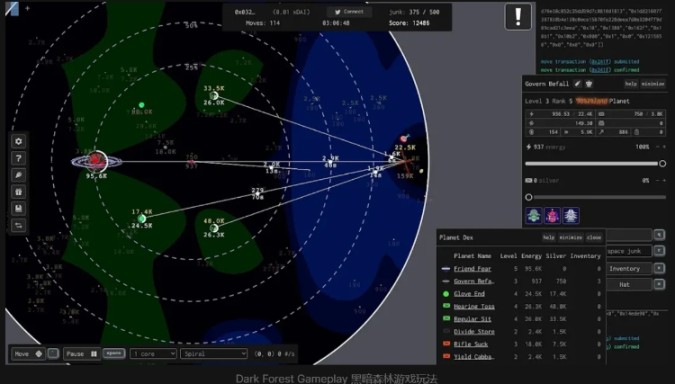Is the autonomous world/full-chain game a boring toy for Crypto technology geeks? Or is it a Cult type MeMe?
The reason why we have these questions is because the abstract and complex definition of autonomous world/full-chain games and the current simple to crude game interface and interaction make most game players feel bored and intimidated.
But in fact, although autonomous world/full-chain games have a completely different game experience from other paradigm games, it does not mean that it is not fun. As a veteran game player, DarkForest, the first full-chain game, is the only game in 5 years that I played all night for two days in a row.

If the space of other games is a sandbox, and the game content is the simulation of the secret room game, then the space of the full-chain game is digital physical reality, and the full-chain game The content of the chain game is a simulation of real-world games. While playing DarkForest, I truly experienced the cosmic horror that penetrated my bones in Liu's "The Three-Body Problem".
The Lattice team set the connotation and extension of the concept of autonomous world/full-chain game in the "Autonomous World Declaration", and combined the concept of autonomous world/full-chain game into Chain games are distinguished from Web2.5 games.
Autonomous world/full-chain game is a self-sustaining open game system based on digital physical reality and basic rules. It is durable, immutable, and permission-free.
A full-chain game in the narrow sense is an autonomous world. Its playability does not come from the game content (cosmic view, plot,
music, vertical painting, etc.) and game goal provided by the game developer. (Levels, achievements, dungeons, national wars), etc., come from the real experience of the sub-world (Sub-World) built by players in their own world.
The construction logic of autonomous world/full-chain games is objects - basic rules - digital physical reality, which respectively correspond to entities - components - systems of the game engine ECS framework.
In a sense, autonomous world/full-chain games are exploring the construction of the next layer of virtual world based on the information bits of the real world we live in. Or we can use Musk’s term to nest a new virtual world based on a virtual world. This is consistent with the famous scene in the American science fiction TV series "Rick and Morty" where a multi-layered world is infinitely recursively nested.
The above is the detailed content of Analyze the three design paradigms of full-chain game engines Mud, Dojo, and Zypher. For more information, please follow other related articles on the PHP Chinese website!




